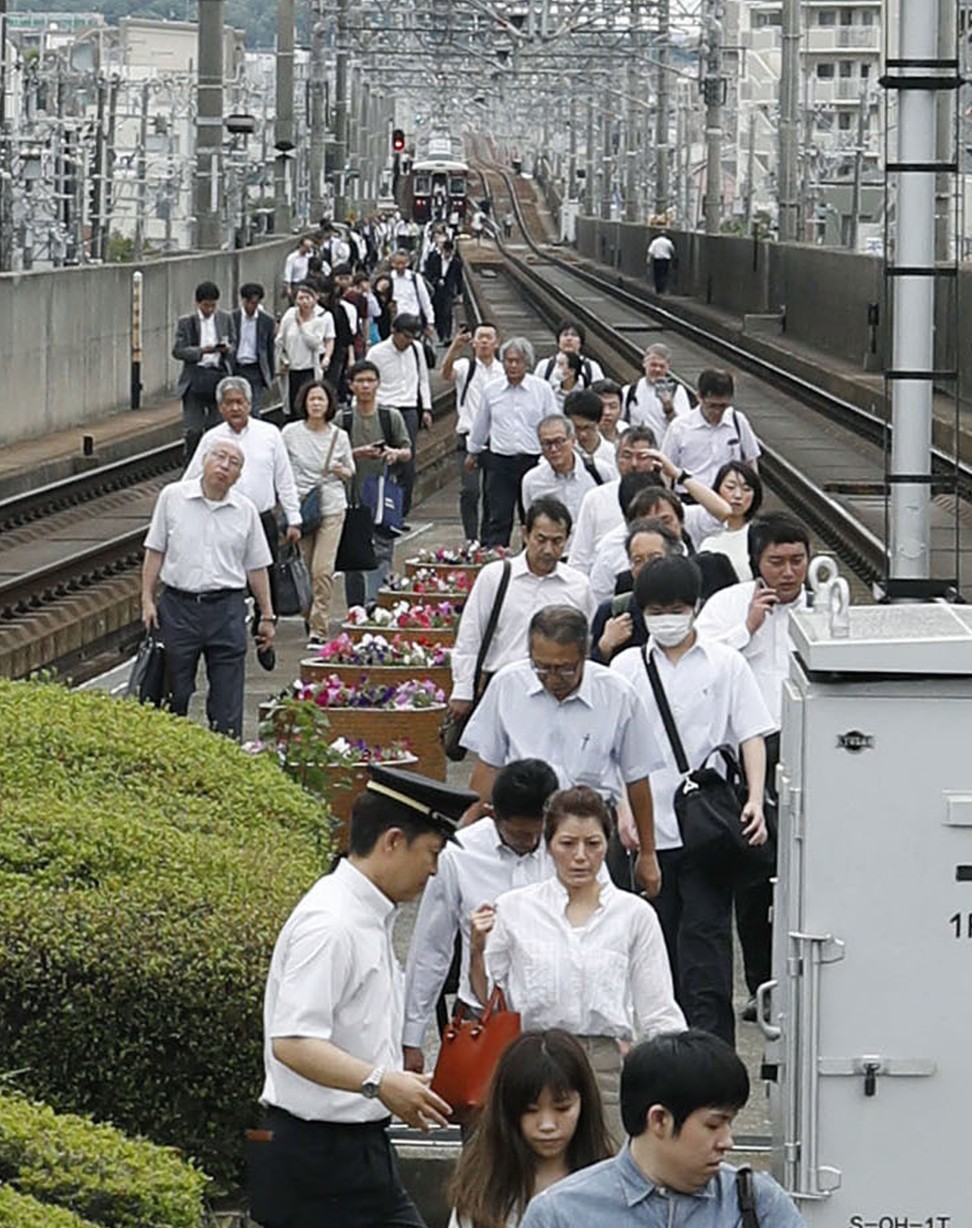
Death toll rises to four after deadly rush-hour earthquake struck Osaka, Japan
The quake knocked over walls, broke windows and set off scattered building fires. It toppled book shelves in homes and scattered goods on the floor of convenience stores and other shops
The death toll from a powerful earthquake that rocked Japan’s second city of Osaka on Monday has risen to four, with a nine-year-old girl among the dead, while more than 200 were injured, according to an official tally.
Television images showed buildings swaying and burst pipes spewing water after the 5.3-magnitude quake, which struck at 7:58am, at the height of rush hour in the city of around 2 million people.
However, there was no large-scale destruction and no tsunami warning issued after the earthquake, although commuters were stranded and tens of thousands were left without power.

Among the casualties was a nine-year-old girl who died in the city of Takatsuki, north of Osaka city, when about 40 meters of a concrete wall surrounding her school’s swimming pool collapsed, rapping her.
Prime Minister Shinzo Abe said in Tokyo that the government is working hard to rescue people, and that he had ordered relevant ministers to take measures to ensure the safety of schools in the future.
Minoru Yasui, an 80-year-old resident of Osaka’s Higashiyodogawa Ward, was also killed when a wall collapsed. He was heading to his routine activity to keep watch over children commuting to school.
Hongkongers reportedly safe after deadly earthquake strikes Osaka
Two more people in their 80s in Osaka Prefecture died after they were crushed by furniture at their homes, according to local authorities.
The Fire and Disaster Management Agency said more than 200 people were injured.
Government spokesman Yoshihide Suga cautioned “there is a possibility that strong aftershocks will happen”.

“Large-scale quakes are likely to happen in the next two to three days,” he told reporters.
Japan sits on the Pacific “Ring of Fire” where a large proportion of the world’s earthquakes and volcanic eruptions are recorded.

Locals described the moment the quake jolted the highly urbanised area at 8:00am, when platforms would have been heaving with passengers waiting to board their commuter trains.
“The floor moved violently. It was a strong vertical jolt. Nearly all of the dishes fell and shattered on the floor,” said Kaori Iwakiri, a 50-year-old nurse in Moriguchi, just north of Osaka city.
“My parents suffered a blackout and they have no water. I plan to take water to them now.”
Many commuters in the morning rush hour were left stranded at stations and on streets as the quake disrupted operations of the shinkansen bullet train and other railways in western and central Japan.

Television images showed passengers getting off trains onto the tracks between stations.
Despite having a relatively low magnitude, the quake caused quite a shake, registering a lower six on the Japanese experiential scale of up to seven, meaning it is hard to stay standing.

Several small aftershocks followed, and an official from Japan’s meteorological agency warned residents to remain on guard.
“We were sleeping and it woke us up abruptly,” said Kate Kilpatrick, 19, who was staying in a hotel in Osaka when the quake hit.

“It was so terrifying because this is my first earthquake. I thought it was a nightmare because I was so confused. The whole world was aggressively shaking,” she said.
A Post reporter in Kobe, about 30km from Osaka, said he felt his hotel room shake for a few seconds. Soon after the quake, a message was broadcast throughout his hotel warning travellers not to use the lifts. Hotel staff were calm and told the reporter it was safe to stay in his room.
NHK showed footage of firefighters tackling a blaze that ripped through a home north of Osaka.
The Nuclear Regulation Authority said it had detected no problems at its local atomic power plants, but some companies, including Honda, said they had suspended operations at local plants.

Kansai Electric said on its website that around 170,000 homes in the Osaka region were briefly without power.
“There are fears that the risk of house collapses and landslides has increased in the areas shaken strongly,” said Toshiyuki Matsumori, in charge of monitoring quakes at the meteorological agency.
Associated Press, Agence France-Presse, Kyodo, Reuters, Bloomberg
